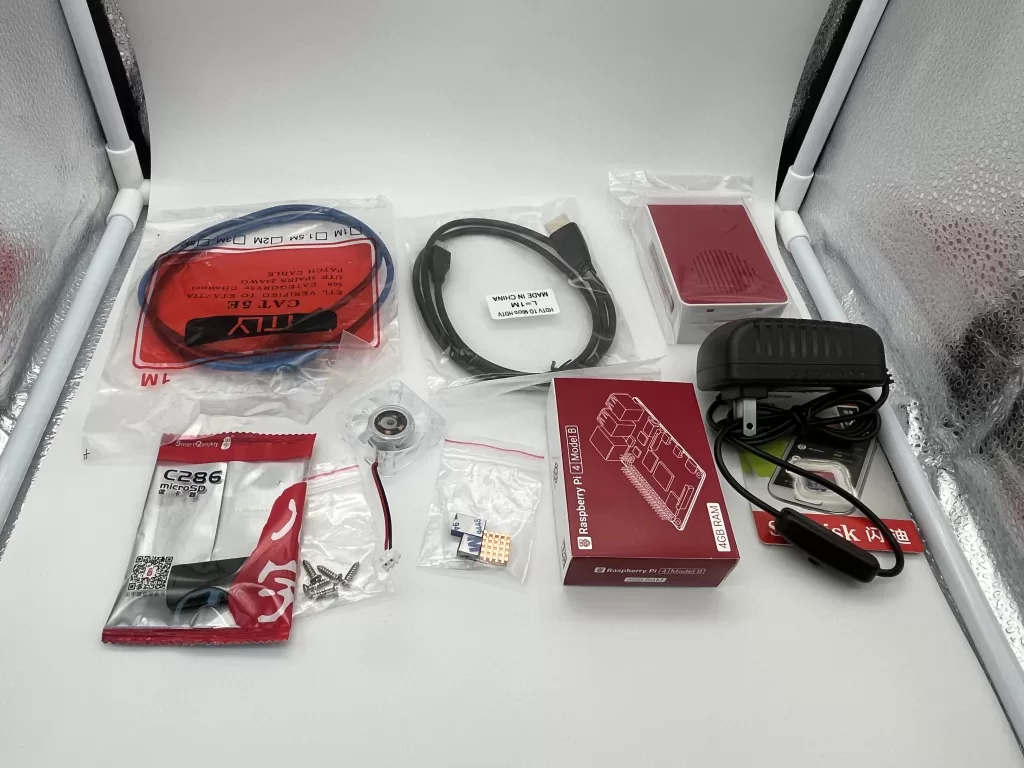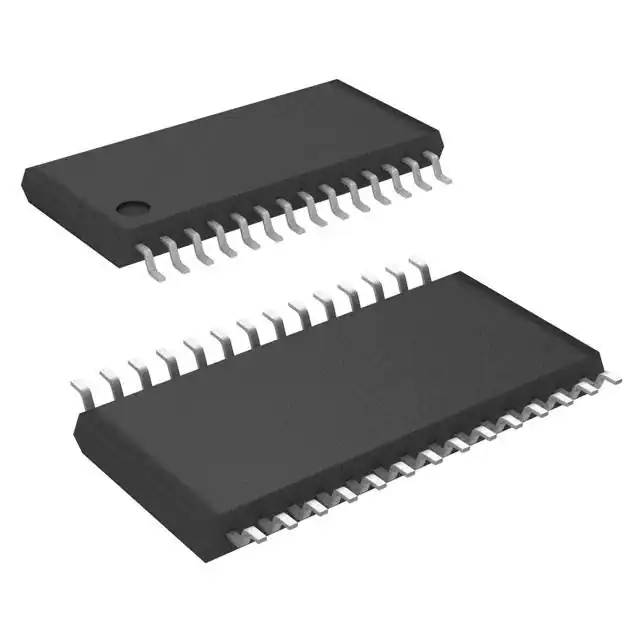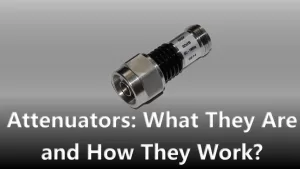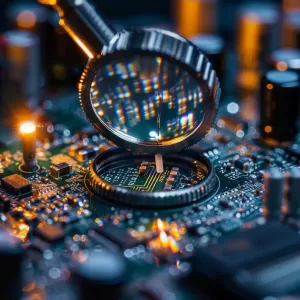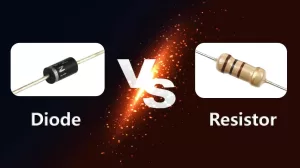From traffic control to audio engineering, attenuators are essential in many different fields. In order to ensure safety and best performance, thes...
View detailsEssential Tweezers for Electronics and Their Uses
In this blog, we will delve into the fascinating world of electronic tweezers, exploring their types, uses, and the best practices for keeping them sharp and functional.
What are Tweezers?

Tweezers are small hand tools used to grab things too small to be handled by human fingers. They are thumb-driven forceps. Tweezers come in a variety of shapes, but most are made up of two thin strips of metal or plastic connected at one end and tapering to a point at the other end.
When were Tweezers Invented?
Tweezers are an ancient tool, and determining their precise origin date is challenging. However, evidence suggests that its use dates back to approximately 3000 BC.
- Archaeological finds: Archaeological artifacts from this period in Mesopotamia and India include tweezers made of seashells and bronze.
- Drawings: Egyptian drawings show craftsmen employing double-bow-shaped instruments, presumably early tweezers, around the same period.
What are Tweezers Used for?
Here are some of the common uses for tweezers:
- Grooming: Tweezers, particularly those with a slanted tip, are widely used to pluck hair off the face or brows.
- Splinter removal: Pointed-tip tweezers are ideal for removing splinters from the skin.
- Crafts and hobbies: Tweezers are useful for holding small things in crafts and hobbies like jewelry making, beading, and electronics repair.
There are other tweezers developed for certain purposes, such as attaching eyelashes.
Types of Tweezers
When it comes to electronics, not all tweezers are made equal. Here's an overview of the most frequent categories and their appropriate applications:
- Straight-Tip tweezers: These multipurpose tweezers provide a secure grasp for general component handling and wire manipulation.
- Bent Tip Tweezers: The bent tips allow for easier access to components in small locations or when working on circuit boards with tightly packed components.
- Ultra-Fine Tip Tweezers: These have extremely sharp and narrow tips that are ideal for handling small components like surface-mount devices (SMDs).
- ESD-Safe Tweezers: Electrostatic discharge (ESD) can cause harm to sensitive electronic components. ESD-safe tweezers are comprised of conductive materials, which dissipate static charge and prevent harm.
- Ceramic Tweezers: Heat-resistant ceramic tweezers are great for soldering because they can tolerate extreme temperatures without melting or warping.
- Reverse Action Tweezers: These tweezers open by squeezing the handles, resulting in a "self-closing" movement that might be useful for holding components steady while freeing up your hand.
How Tweezers are Made?
The manufacturing process of tweezers involves several steps:
- Material Selection: The material used is determined by its intended use. Stainless steel is a popular material for electronic tweezers because of its durability, corrosion resistance, and anti-static qualities.
- Forging or Stamping: The basic shape of the tweezer body is created using forging or stamping procedures.
- Machining and Finishing: The body and tips are precision machined to produce the correct shape, size, and smoothness.
- Tip Sharpening: Fine-tipped tweezers are sharpened using a specific procedure that results in precisely tapered points.
- Spring Mechanism Integration: The spring mechanism, which is frequently made of high-quality steel, is built into the body design.
- Polishing and Finishing: The final tweezers may be polished to get a smooth and visually pleasing finish.
- Quality Control: Thorough quality inspections ensure that the tweezers satisfy criteria for operation, tip sharpness, and overall durability.
Video related to Top 5 Best Tweezers of 2023
Why are Tweezers Used in Electronics?
The precision offered by tweezers makes them invaluable for a multitude of tasks in electronics:
- Component Handling: Tweezers allow for carefully handling tiny electronic components such as surface-mount resistors, capacitors, and integrated circuits (ICs), preventing fingerprint and oil damage.
- Wire Manipulation: Tweezers make it simple to bend, shape, and place wires for circuit connections.
- Soldering: Tweezers are used to secure components, ensure precise placement, and minimize overheating.
- Desoldering: Tweezers provide control and stability for eliminating undesired solder junctions.
- Cleaning and Repair: Tweezers help remove dust, debris, and stray solder fragments from fragile electronic components during cleaning and repair procedures.
- Inspection: Fine-tipped tweezers offer a stable grip and magnified view for intimate examination of complex components or solder junctions.
How do Tweezers work?
- Grip: Grip the tweezers comfortably with your thumb and index finger.
- Squeeze: Pinch the handles together and apply pressure.
- Lever Magic: The squeeze causes a lever action, which amplifies the force.
- Tip Pinch: The squeeze causes the pointy or angled tips to touch exactly.
- Grab: The textured tips hold the small object firmly.
- Maneuver: Use tweezers to move or remove an object.
How to Sterilize Tweezers?
For jobs that require sterile instruments, sterilize your tweezers by wiping them with alcohol or using an autoclave. Always follow the manufacturer's guidelines for safe sterilizing methods.
Why do Tweezers Stop Working?
Several factors can contribute to malfunctioning tweezers:
- Dull Tips: Wear and tear can cause tweezers' tips to become blunt, diminishing their gripping capacity.
- Misalignment: Accidental falling or incorrect handling can cause the tips to become misaligned, limiting efficiency.
- Material Fatigue: After extended usage, the spring mechanism in tweezers might deteriorate, reducing their closing force.
How to Fix Tweezers?
For minor difficulties such as misaligned tips, careful adjustment with fine-tipped pliers may be possible. However, if the tweezers have badly dulled tips, a bent body, or a weakened spring mechanism, replacing them is frequently the best remedy.
Conclusion
For anyone dealing with electronics, a well-chosen pair of tweezers becomes an extension of their hand. Understanding the many types, their functions, and basic maintenance procedures ensures that you have the best tool for the job. By keeping your tweezers sharp, sterile, and properly used, you can ensure precise handling of delicate components, resulting in successful electronic projects and repairs.
Ella
Ella is a skilled embedded systems engineer with experience in PCB design and microcontroller programming. She is committed to following the most recent developments in the field and is constantly seeking for ways to apply them to her work.
WEW ALL POSTS BYElla-
Attenuators: What They Are and How They Work? 684
-
How to Choose a Loupe for Detailed Electronics Work? 39
In this blog, we will delve into the world of loupes, equipping you with the knowledge to choose the perfect one for your detailed electronics work.
View details -
DSP VS DAC: Understanding the Differences, Applications and Future 1530
The article aims to provide a comprehensive explanation of Digital Signal Processors (DSP) and Digital-to-Analog Converters (DAC), highlight their ...
View details -
Can Verilog and VHDL be improved for FPGAs? 255
This article is going to simply introduce Verilog, the history of Verilog, VHDL, the history of VHDL, as well as talk about the Conventional FPGA D...
View details -
Unveiling the Difference between Diode and Resistor 747
Two of the most fundamental components in an electronic device are diodes and resistors. They can be found in both basic and sophisticated circuits...
View details -
Stepper Motor Basics: Operating Principles and Mechanisms 78
In this blog, we will delve into the fascinating world of stepper motors, explaining their operating principles, mechanisms, and various applications.
View details
 Ampheo Electronics
Ampheo Electronics